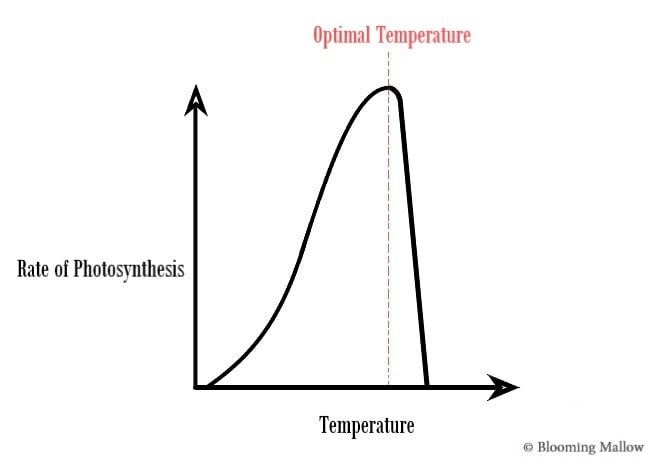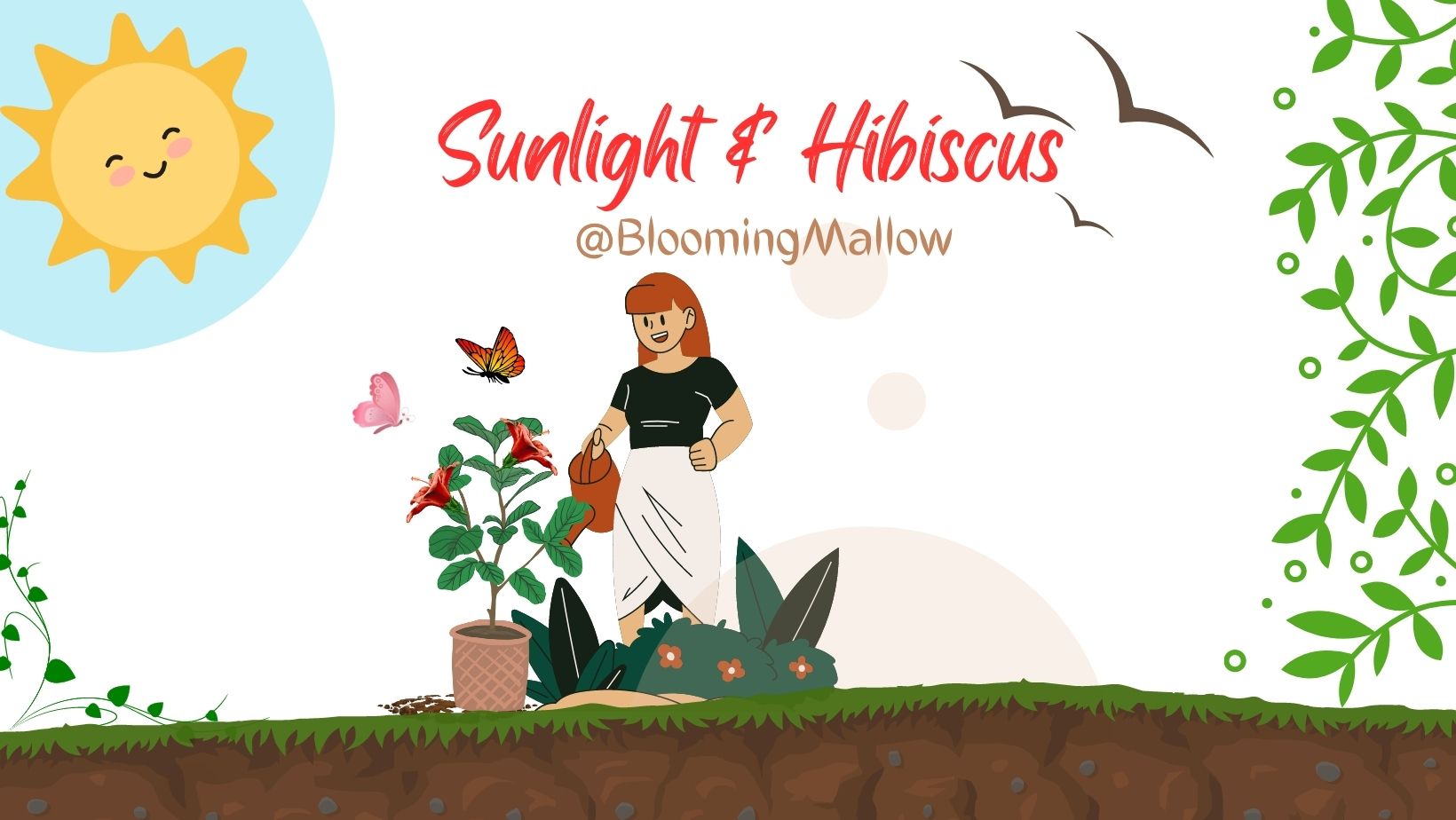
Welcome, my fellow gardeners and nature lovers, to yet another good read on Blooming Mallow!
If you’re like me, you appreciate the stunning beauty of Hibiscus flowers and want to make sure they reach their full potential. And in this post, we’re going to look at the crucial role sunlight plays in the growth and well-being of these plants.
So, without further ado, let’s uncover the secret.
Importance of Sunlight in Hibiscus Plants
Sunlight is critical for photosynthesis, which is how plants, including Hibiscus, produce their food. During photosynthesis, plants use the light energy from the sun to convert carbon dioxide and water into glucose (sugar) and oxygen. Without sunlight, plants cannot carry out this process and their growth gets affected.
Hibiscus plants require a minimum of 6 hours of direct sunlight per day to carry out this process under ideal conditions. Thus, planting them in a location that receives ample sunlight is crucial for their health.
In hotter climates, however, it is essential to consider the intensity of sunlight and place the plant in a location that receives morning sunlight and filtered shade in the afternoon.
Conversely, when it gets cold, the plant does well in full sun throughout the day.
In short, the amount of sunlight required for Hibiscus plants depends on the prevailing temperature. As the temperature rises, photosynthesis increases until a certain threshold level is reached. Beyond this level, any further increase in temperature can cause a decline in the rate of photosynthesis.
Why?
This is because Photosynthesis comprises two reactions – the light-dependent and light-independent reactions. The light-dependent reaction is controlled by enzymes that function optimally at specific temperatures, resulting in faster photosynthesis. However, if the temperature exceeds the enzymes’ working range, the process of photosynthesis can cease.

This is why maintaining an appropriate temperature along with suitable sunlight is crucial for the growth and health of Hibiscus plants. If the plant receives just enough sunlight and the right temperature, photosynthesis will occur at an ideal rate, promoting healthy growth and blooms.
What Happens When Hibiscus Gets Too Much Or Too Little Sun?
When Hibiscus plants receive too much or too little sunlight, they exhibit specific symptoms that indicate their condition. These signs can help you determine whether the plant is content with its situation or not.
Inadequate sunlight can result in faded and droopy leaves, one-sided growth, or a limp towards the sun. Additionally, leaves may turn light green, and new leaves may look unusually small or lack their typical structure.
Excessive sunlight can also have a negative effect on Hibiscus plants when combined with high temperatures. Excessive exposure to sunlight can lead to a condition known as photoinhibition or the inability to process sunlight into energy due to excess radiation.
This can result in a reduction in photosynthetic capacity and an increase in reactive oxygen species (ROS), which can create photooxidative stress.
In short, while both temperature and sunlight are necessary for a plant’s growth, excessive levels of either can have a negative impact.
How Much Sunlight Does Hibiscus Require?
Hibiscus typically blooms best with 6 hours of sunlight, but this is only under ideal temperature conditions such as tropical environments, and may not always apply to other regions.
Speaking about the United States, the ideal growing conditions are commonly found in places like Hawaii, where the yellow Hibiscus has been designated as the state flower.
That said, not everyone lives in Hawaii. So, anybody growing Hibiscus in regions apart from the tropics may need to improvise a bit to create an optimal environment for their plants.
When the temperature is between 15°C and 35°C, Hibiscus plants can handle full sun throughout the day. In fact, they will typically grow and bloom best in this temperature range when they receive plenty of sunlight.
However, when the temperature crosses 35°C, Hibiscus plants may need some shade during the hottest part of the day to avoid getting sunburned. This holds especially true if the plant is placed in a very hot location or if you have recently moved the plant from indoors. But if you are sure that this temperature is the highest your region observes, you can let your Hibiscus adapt to the environment and keep up with its water requirement.
For regions that can go beyond 40°C, it is advised to limit the amount of sunlight your plant receives by placing them under partial shade on the hottest part of the day.
In the case of a garden-grown Hibiscus, that cannot be moved – you have to increase the watering frequency to two times a day (in the early morning and evening).
On the other hand, in case of frost (temperature drops to 0°C or less), it is important to move the plant to a warmer location (preferably indoors).
For the ones grown in the garden – you can cover your Hibiscus with a blanket or other protective material to limit frost damage. However, it is highly likely, that your outdoor plant will either enter into dormancy (in the case of hardy variety) or will die (in the case of tropical variety).
To determine the appropriate amount of sunlight and optimal location for your Hibiscus plant, please refer to the chart below, which provides guidelines based on the temperature range in your region.
| Temperature | Sunlight Duration | Location | ||
|---|---|---|---|---|
| Less than 0°C | Maximum sunlight (or 12 hours of artificial light) | Indoor in case of potted plants / Keep them covered in case of garden hibiscus | ||
| 1°C to 5°C | 8 hours (or 10-12 hours of artificial light) | Indoor in case of potted plants / Keep them covered in case of garden hibiscus | ||
| 5°C to 10°C | 7-8 hours | Outdoor but less windy location for potted plants / Uncover your garden hibiscus | ||
| 10°C to 15°C | 6-7 hours | Outdoor with full sun (no protection needed) | ||
| 15°C to 35°C | 5-6 hours | Outdoor (ideal time for flowering) | ||
| 35°C to 40°C | 4-5 hours | Outdoor (maintain the humidity level in soil or move in semi-shade) | ||
| 40°C to 45°C | 3-4 hours | Outdoor with semi-shade (frequent hydration required) | ||
| Above 45°C | Partial sunlight only | Outdoor under shade net (frequent hydration with regular foliar spray) |
Note: To make an accurate assessment of a particular location, it is recommended that both temperature and sun exposure be carefully observed. It is also important to note the duration of sunshine in each season. Plus, shade from rapidly growing trees during the summer months can also have an impact.
A location that receives full sun is characterized by direct sunlight for a significant portion of the day, while a partially shaded location receives sun for half the time. A shaded location, on the other hand, receives no direct sunlight.
For potted plants, adjustments can be made to reduce sun exposure, while for garden plants that are planted in the ground, the surrounding area can be made greener to reduce the overall temperature or a shade net can be utilized.
Can Hibiscus Plants Grow In Shade?
While Hibiscus plants need a considerable amount of direct sunlight everyday, they can also grow in partial shade or filtered sunlight.
According to a study published by the department of horticulture, Mississippi state university, Hibiscus plants grown under 50% shade had better growth, quality, and yield compared to those grown under full sunlight provided it is accompanied by 200 ppm N/12 g controlled-release fertilizer per 18-cm pot.
However, do note that too much shade can lead to leggy growth in Hibiscus along with reduced flowering. So, it is important to provide adequate light while protecting the plants from excessive heat.
If you’re looking to grow Hibiscus indoors without access to sunlight, or during a period when sunlight is limited, here are some tips that may help:
- Use grow lights: As mentioned before, artificial light can be used as a substitute for sunlight. Choose full-spectrum grow lights (Click here to buy from Amazon), which are designed to mimic the natural spectrum of sunlight, and place them near your Hibiscus. Keep the lights on for 12 hours a day, and adjust the distance and intensity of the light as needed.
- Place near a bright window: If you have a window that receives indirect light, place your Hibiscus plant nearby to give it some natural light.
- Provide consistent temperature and humidity: Hibiscus plants require consistent temperature and humidity to grow well. Keep the plant in a location with a temperature range of 15-25°C but make sure it’s not placed right beside the heater. Also, you may have to monitor the humidity with a dehumidifier and keep it around 30% to 50% (the more the better).
- Fertilization: Fertilizing your Hibiscus plant when it does not get enough sunlight can help keep it healthy. However, it is best to always dilute the fertilizer with water to prevent any kind of damage to the plants. Another thing to note here is if your Hibiscus is dormant due to the weather, it may not need any fertilizer at all. So, only fertilize in case it is actively growing.
How To Protect Hibiscus From Excessive Sunlight?
Hibiscus plants can be sensitive to excessive sunlight, which can cause their leaves to wilt, turn yellow or brown, and reduce the number of flowers they produce. Here are some steps you can take to protect your Hibiscus from excessive sunlight:
- Provide shade: If your Hibiscus is in a location that receives too much direct sunlight, consider providing some shade. You can use a patio umbrella or a shade cloth, or simply move the plant to a shadier location.
- Water regularly: Hibiscus plants need plenty of water, especially when exposed to direct sunlight. So, make sure to water your Hibiscus regularly early in the morning or evening to prevent drought stress. But don’t forget – overwatering is equally dangerous for the plant.
- Add cocopeat/mulch: Adding a layer of cocopeat or mulch around the base of your Hibiscus can help to keep the soil moist and cool. This can also help to reduce the amount of water your Hibiscus needs and can protect the roots from excessive heat.
- Avoid fertilizing during the day: It’s generally not recommended to fertilize Hibiscus plants during periods of excessive heat and intense sunlight, as this can increase the risk of fertilizer burn. When the soil and air are very hot, the plant’s ability to take up water and nutrients is reduced, which can lead to fertilizer salts building up in the soil and damaging the plant’s roots and leaves.
Fertilizing your plants in the evening or early morning, when temperatures are cooler, can be a better option. During these times, the soil is usually moist and cooler, which makes it easier for the plants to absorb the nutrients.
Bottom Line
The right sunlight for Hibiscus depends on the region, climatic conditions, and overall temperature. If the plant doesn’t receive enough sunlight, it can become weak and vulnerable to pests and diseases.
Aside from light, the plant requires high humidity to grow and bloom successfully. If you live in a dry climate, you can increase humidity by misting the plant regularly or placing a dehumidifier near it.
The intensity of the sunlight is also important for Hibiscus. In hotter climates, the plant should be placed in a location that receives morning sunlight and filtered shade in the afternoon to protect it from the heat. In cooler climates, the plant can tolerate full sun throughout the day.
In the case of indoor-grown Hibiscus, make sure to place it in a location that receives plenty of bright, direct sunlight. A sun-facing window is ideal, but you can also use artificial lights to supplement sunlight if necessary.
If you follow these guidelines, your Hibiscus plant will thrive and produce beautiful flowers.
Have fun gardening 😊




